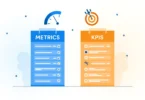In today’s fast-paced business environment, efficiency is key to staying ahead. Whether you’re part of a small team or managing a large organization, the ability to streamline processes, improve collaboration, and automate tasks is crucial. This is where workflow management solutions come in. These powerful tools are designed to help businesses of all sizes optimize their workflows, reduce manual effort, and boost productivity. In this blog post, we’ll dive deep into the importance of choosing the right workflow management solution, how to scale your tools as your business grows, and a roundup of the top options to try in 2025. Whether you’re looking to simplify day-to-day tasks or enhance team collaboration, we’ve got you covered.
Table of contents
Why Workflow Management Solutions Matter in Today’s Digital Workspace
- The Role of Workflow Automation Tools in Business Efficiency
- How Workflow Tools Improve Team Collaboration and Task Visibility
- Common Pain Points Solved by Digital Workflow Platforms
Top 7 Workflow Management Solutions to Try in 2025
How to Choose the Right Workflow Management Solutions for Your Team
- Key Features to Look For in a Workflow Management Tool
- Cloud vs On-Premise: What Works Best for Modern Teams?
- Scaling Your Workflow Tools With Growing Business Needs
Why Workflow Management Solutions Matter in Today’s Digital Workspace
In the digital age, businesses are increasingly relying on technology to stay competitive. As teams become more distributed and work environments become more complex, managing workflows manually or using outdated methods is no longer efficient. This is where workflow management solutions come into play. These tools are essential for organizing tasks, automating processes, and improving collaboration in today’s fast-paced, digital-first workspace. In this section, we’ll explore why investing in these solutions is critical to maintaining productivity, enhancing team communication, and scaling your business in the modern digital landscape.
The Role of Workflow Automation Tools in Business Efficiency
In a fast-paced digital economy, efficiency isn’t just a luxury—it’s a necessity. That’s where workflow management solutions step in. These tools are designed to automate repetitive tasks, eliminate bottlenecks, and help teams work smarter—not harder.
Workflow automation tools serve as the backbone of streamlined business operations. Instead of juggling spreadsheets, emails, and scattered notes, teams can centralize their tasks, timelines, and communications in a single platform. This not only reduces human error but also enhances productivity by allowing teams to focus on high-impact work rather than manual processes.
For example, platforms like Zapier automate tasks across apps—such as sending follow-up emails or updating CRMs—without requiring any code. Meanwhile, Monday.com and ClickUp offer visual boards and automated status updates, ensuring that every team member knows what’s next without needing constant check-ins.
At their core, workflow management solutions bring structure to chaos. They improve accountability, increase task visibility, and speed up execution across departments. Whether you’re managing a marketing campaign or a product launch, having a robust workflow system in place can dramatically cut down on delays and miscommunication.
By integrating automation into daily workflows, businesses unlock a new level of agility—making it easier to adapt, scale, and compete in a dynamic market.
How Workflow Tools Improve Team Collaboration and Task Visibility
Collaboration and clarity are two pillars of any high-functioning team—and that’s exactly where workflow management solutions excel. These tools break down silos, align team members, and create a shared space where tasks, goals, and progress are visible to everyone involved.
In traditional work environments, information often lives in fragmented emails, spreadsheets, or isolated chats. This leads to confusion, duplicated work, and delays. Workflow management solutions eliminate this friction by centralizing communication and task tracking. Tools like Asana and Trello let teams assign responsibilities, set deadlines, and comment directly within tasks—keeping everyone on the same page and aligned toward the same objectives.
What’s more, these platforms offer real-time updates, so when something changes—like a deadline shift or task reassignment—everyone is notified instantly. This boosts transparency and helps prevent costly misunderstandings.
Task visibility also plays a major role in accountability. When every team member can see who’s doing what and by when, it fosters a sense of ownership. With Kanban boards and project timelines, team leads can quickly spot delays, redistribute workloads, and keep the project moving forward.
Beyond communication, workflow tools often integrate with platforms like Slack and Google Workspace, making it even easier to blend collaboration with daily operations. Whether your team is remote, hybrid, or in-office, these workflow management solutions empower smoother communication, quicker feedback loops, and a more cohesive working environment.
Common Pain Points Solved by Digital Workflow Platforms
Every business, regardless of size or industry, struggles with recurring inefficiencies—missed deadlines, communication breakdowns, duplicated efforts, or simply not knowing the status of a task. These are more than just annoying glitches—they drain productivity, increase stress, and cost teams time and money. Thankfully, workflow management solutions are designed to tackle these challenges head-on.
1. Lack of Task Clarity and Ownership
Without a clear system, it’s easy for team members to feel unsure about their responsibilities. Tasks get forgotten, or worse, duplicated. Workflow management solutions like ClickUp and Monday.com assign tasks to specific team members, include due dates, and outline priorities. This gives everyone a clear view of what needs to be done and who’s doing it, reducing ambiguity.
2. Communication Overload and Fragmentation
Important updates often get buried in endless email threads or scattered messages across different apps. Digital workflow platforms centralize communication, allowing discussions to happen in the context of each task or project. Integrations with Slack and Microsoft Teams also make it easy to keep communication streamlined and purposeful.
3. Manual, Repetitive Tasks
From sending status updates to logging data, repetitive admin work eats into productive hours. With automation features, workflow management solutions like Zapier and Asana can handle these tasks for you. They automate recurring actions, trigger notifications, and update workflows—so your team can focus on what really matters.
4. Poor Project Visibility
When managers can’t track progress in real time, it becomes difficult to identify bottlenecks or adjust timelines. Platforms like Trello and Smartsheet offer visual dashboards, progress bars, and custom reports that enhance project tracking and help leaders make informed decisions faster.
5. Difficulty Scaling Processes
As businesses grow, their workflows often become more complex. What worked for a team of five may collapse under a team of fifty. Scalable workflow management solutions adapt to growth by offering custom workflows, advanced reporting, and flexible permissions—ensuring systems grow with your team, not against it.
By resolving these pain points, digital workflow platforms don’t just make work easier—they fundamentally transform how teams operate, communicate, and deliver results.
Top 7 Workflow Management Solutions to Try in 2025
In 2025, businesses are seeking smarter, faster ways to get things done—and workflow management solutions are leading the charge. These tools don’t just help you track tasks; they help you work better, collaborate seamlessly, and automate the mundane. Below are seven standout workflow tools that are redefining productivity across industries.
1. Trello: Visual Workflow Planning with Kanban Boards
Trello is perfect for teams that thrive on visual organization. Its intuitive Kanban board layout lets you create task cards, assign them to team members, and move them through stages like “To Do,” “In Progress,” and “Done.” Trello is highly flexible—great for marketing teams, freelancers, or small startups looking for a lightweight workflow management solutions. With Power-Ups, you can integrate tools like Google Drive, Slack, and more, extending Trello’s capabilities as your team grows.
2. Monday.com: All-in-One Workflow and Project Tracker
Monday.com is a powerhouse when it comes to centralized project management and workflow automation. Its customizable dashboards, timelines, and automation features make it one of the most robust workflow management solutions available. You can create templates for marketing campaigns, sales pipelines, product development, and more. It’s user-friendly yet scalable, making it a great fit for small teams and large enterprises alike.
3. ClickUp: Customizable Task Management Software
With its slogan “One app to replace them all,” ClickUp delivers on flexibility. Whether you’re managing tasks, documents, goals, or time tracking, ClickUp lets you build workflows that mirror your exact business processes. Depending on your preference, you can switch between views like List, Gantt, Calendar, or Kanban. These workflow management solutions are ideal for businesses that want to consolidate multiple tools into one streamlined platform.
4. Asana: Team Productivity and Workflow Clarity Tool
Asana stands out for its clean interface and strong emphasis on team collaboration. It allows you to map out workflows, break them into tasks and subtasks, and track progress with timelines and milestones. It’s especially useful for cross-functional teams who need visibility into complex projects. With features like automation, integrations, and workload balancing, Asana is a trusted workflow management solution across industries.
5. Smartsheet: Spreadsheet-Powered Project Automation
If your team is used to working in Excel but needs more power and automation, Smartsheet offers the perfect bridge. It combines the simplicity of a spreadsheet with advanced features like Gantt charts, automated workflows, and real-time collaboration. It’s widely used in industries like construction, marketing, and IT for its versatility and familiar interface. Smartsheet is a powerful workflow management solution for data-driven teams that love structure.
6. Jira: Workflow Solution for Agile Development Teams
Developed by Atlassian, Jira is a favorite among software development teams practicing Agile or Scrum. It offers highly customizable workflows, backlog grooming, sprint planning, and issue tracking. Jira integrates deeply with tools like Bitbucket, Confluence, and GitHub, making it the go-to workflow management solution for technical teams needing precision and control. With detailed reporting and built-in automation, Jira empowers developers to deliver high-quality code, faster.
7. Zapier: Automate Repetitive Tasks Without Code
Zapier isn’t a task manager in the traditional sense, but it’s one of the most valuable tools for workflow automation. It connects over 6,000+ apps—including Gmail, Slack, Google Sheets, and Salesforce—and allows users to set up “Zaps” (automated workflows) that run in the background. Want to automatically save email attachments to Dropbox or send a Slack message when a form is submitted? Zapier handles it. It’s the ultimate add-on to boost your workflow management solutions stack.
Each of these tools has unique strengths, but what unites them is their ability to simplify complex workflows, improve visibility, and supercharge team productivity. In the evolving world of work, adopting the right workflow management solutions could be the edge your business needs in 2025.
How to Choose the Right Workflow Management Solutions for Your Team
Choosing the right workflow management solutions is crucial for maximizing efficiency and ensuring your team works seamlessly. With so many options available, it can be overwhelming to find the perfect fit. The right tool will not only streamline tasks and improve collaboration but also scale with your team’s evolving needs. In this section, we’ll break down the key factors to consider when selecting a workflow management solution, so you can make an informed decision that supports your team’s productivity and growth.
Key Features to Look For in a Workflow Management Tool
Choosing the right workflow management solutions can be the difference between scattered, chaotic processes and a streamlined, efficient operation. With so many tools on the market, it’s essential to focus on the features that truly enhance productivity, collaboration, and scalability. Here are the core features every business should look for when evaluating workflow platforms:
1. Intuitive User Interface and Ease of Use
A powerful tool means nothing if your team struggles to use it. Look for a platform with a clean, user-friendly interface that reduces the learning curve. Drag-and-drop functionality, simple navigation, and customizable views (like Kanban, List, or Calendar) are all signs of a well-designed workflow management solution.
2. Task and Project Tracking
At the heart of every workflow tool is the ability to track tasks efficiently. You should be able to assign responsibilities, set deadlines, attach files, and track progress at a glance. Bonus points for tools that offer visual timelines or Gantt charts to provide a bird’s-eye view of project milestones and bottlenecks.
3. Automation Capabilities
One of the most valuable aspects of modern workflow management solutions is automation. Look for tools that let you create rules to automate repetitive tasks—like sending updates, changing task statuses, or notifying team members. Automation reduces manual work and ensures nothing slips through the cracks.
4. Collaboration Tools and Communication Integration
Effective collaboration is key. The best platforms support real-time commenting, tagging teammates, sharing documents, and integrating with tools like Slack, Microsoft Teams, or Zoom. These features eliminate the need to jump between apps and keep everything centralized in one workflow ecosystem.
5. Customizable Workflows
No two teams operate the same way. That’s why flexibility matters. Choose a tool that allows you to design and customize workflows that fit your unique business processes—whether it’s simple task lists or multi-step approval chains.
6. Reporting and Analytics
To improve, you need insight. Many workflow management solutions offer built-in analytics to track task completion rates, team workloads, project timelines, and more. These insights can help managers make data-driven decisions and continuously optimize team performance.
7. Integration with Existing Tools
Your workflow tool should play well with others. Whether you rely on Google Workspace, Dropbox, Salesforce, or HubSpot, your ideal solution should integrate with your current tech stack. Seamless integration saves time and promotes a more unified digital workspace.
8. Mobile Accessibility
With teams working remotely or on-the-go, mobile access is a must. A good workflow platform should offer robust mobile apps that allow users to update tasks, receive notifications, and collaborate—no matter where they are.
When evaluating workflow management solutions, focus on the features that align with your business needs today—and those that will support your growth tomorrow. The right tool isn’t just a software purchase; it’s a strategic investment in productivity, teamwork, and long-term success.
Cloud vs On-Premise: What Works Best for Modern Teams?
When evaluating workflow management solutions, one of the most critical decisions businesses must make is choosing between cloud-based and on-premise deployment. Each option has its pros and cons, and the best fit largely depends on your team’s structure, security needs, budget, and long-term goals.
Let’s break down the key differences to help you make a more informed choice.
1. Cloud-Based Workflow Management Solutions
Cloud-based solutions have become the default for many modern teams—and for good reason. These platforms are hosted on the vendor’s servers and accessed via the internet, offering flexibility, scalability, and real-time collaboration.
Key Benefits:
- Remote Accessibility: Team members can access workflows anytime, anywhere, which is crucial for remote or hybrid teams.
- Automatic Updates & Maintenance: No need for IT staff to manage software patches—updates are rolled out seamlessly by the provider.
- Scalability: Cloud solutions like ClickUp, Asana, and Monday.com grow with your business, allowing you to add features or users with ease.
- Lower Initial Costs: Most operate on a subscription basis, reducing upfront investment.
Ideal For: Startups, small-to-medium businesses, distributed teams, and organizations focused on agility and fast implementation.
2. On-Premise Workflow Management Solutions
On-premise solutions are installed and hosted on a company’s own servers. They offer greater control and are often chosen by enterprises with strict data security requirements or complex IT environments.
Key Benefits:
- Enhanced Data Control: You own and manage the data completely, making it easier to comply with specific regulatory requirements.
- Customization: On-premise tools can be heavily customized to fit unique workflows or legacy systems.
- Security: Often preferred by industries like finance, government, or healthcare, where data sovereignty is non-negotiable.
Challenges:
- Higher Upfront Costs: Includes software licensing, infrastructure setup, and maintenance costs.
- IT Resources Needed: Requires a dedicated team to manage, update, and secure the system.
- Limited Accessibility: Remote access often requires additional configurations or VPNs.
Ideal For: Large enterprises, regulated industries, or organizations with in-house IT infrastructure and strict compliance demands.
Which One Is Right for You?
For most modern teams—especially those embracing hybrid work models—cloud-based workflow management solutions offer the agility, collaboration, and convenience that today’s fast-paced environments demand. However, for companies where control and security outweigh convenience, on-premise solutions still play a crucial role.
Ultimately, the right decision should align with your operational goals, budget, and long-term digital strategy. Some vendors even offer hybrid options, giving teams the best of both worlds.
Scaling Your Workflow Tools With Growing Business Needs
As your organization evolves, so should your tools. A major challenge businesses face is that systems and processes that once worked become bottlenecks as teams expand and projects grow more complex. That’s why scalability is a non-negotiable feature in any workflow management solution you choose.
Here’s how the right tools can support sustainable growth while keeping operations smooth and efficient.
1. Flexibility to Accommodate More Users and Departments
In a small team, managing workflows might be as simple as a shared to-do list. But as your workforce grows across departments—marketing, product development, HR—you need a workflow management solution that can support multiple teams without losing structure.
Look for platforms that allow for team-specific workspaces, custom roles, and permissions control, so everyone has access to what they need without overwhelming others.
2. Customizable Workflows for Unique Processes
No two businesses grow in exactly the same way. As processes evolve, a rigid workflow tool can create more friction than value. Scalable workflow management solutions like ClickUp, Jira, or Monday.com offer modular features and custom automation that can be tweaked as your team’s needs change. Whether you’re adding approval stages, cross-department collaboration, or project templates—your tools should adapt to your way of working.
3. Integration With a Growing Tech Stack
With business growth comes an increase in tools: CRMs, analytics dashboards, communication platforms, customer support software, and more. A scalable solution must integrate seamlessly with your expanding ecosystem.
Top workflow management solutions support native and third-party integrations (like Zapier, Slack, Google Workspace, Salesforce) to help you connect your tools and eliminate silos.
4. Data Insights and Performance Monitoring
As your operations scale, so does your need for visibility. Effective workflow tools should offer advanced reporting, KPIs, and real-time dashboards to help leaders monitor team performance, identify bottlenecks, and make data-driven decisions.
Scalable solutions empower leadership to manage more people, projects, and priorities—without sacrificing oversight.
5. Enterprise-Level Security and Compliance
Growth often comes with increased responsibility, especially in handling sensitive data. As you scale, make sure your workflow management solution offers robust security features like SSO (Single Sign-On), data encryption, audit logs, and compliance with industry standards (e.g., GDPR, HIPAA, SOC 2).
Future-Proofing Your Business with the Right Tool
Scalability isn’t just about more features—it’s about future-proofing your operations. Investing in a flexible, secure, and customizable platform now will save you from costly migrations or disruptions later.
Whether you’re scaling from 10 to 100 employees or expanding to global teams, your workflow management solution should be a growth partner—not a limiting factor.
The right workflow management solution can be a game-changer for your business, boosting efficiency, collaboration, and productivity across all teams. As we’ve explored, the ability to streamline processes, automate repetitive tasks, and adapt to evolving needs is essential for companies looking to stay competitive. Start exploring the top solutions we’ve outlined, and find the one that will supercharge your business in 2025 and beyond.
Recommended: 8 Amazing Ways a Pomodoro Technique Timer Can Transform Your Workflow








Leave a Comment